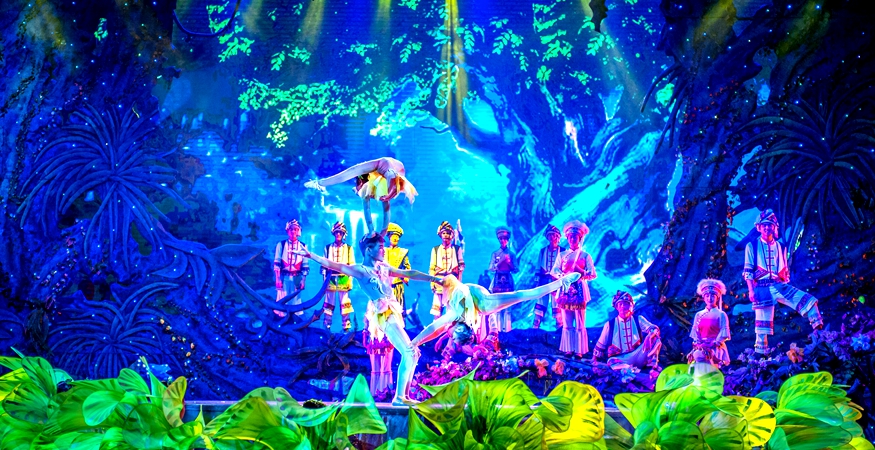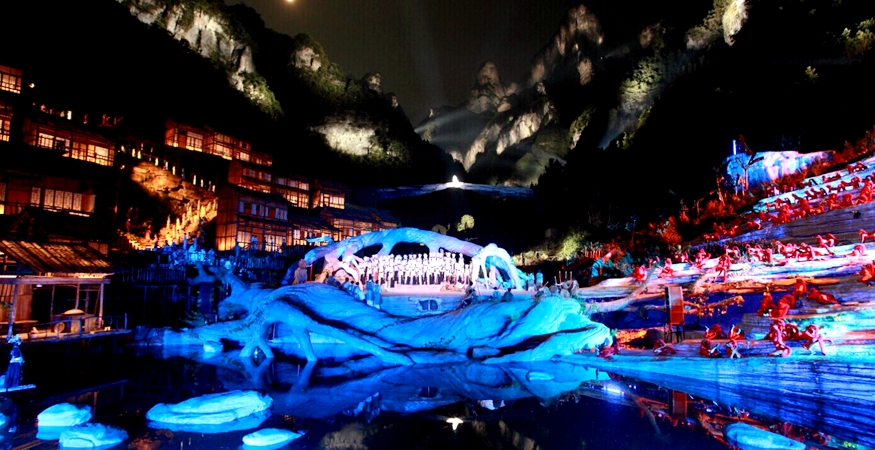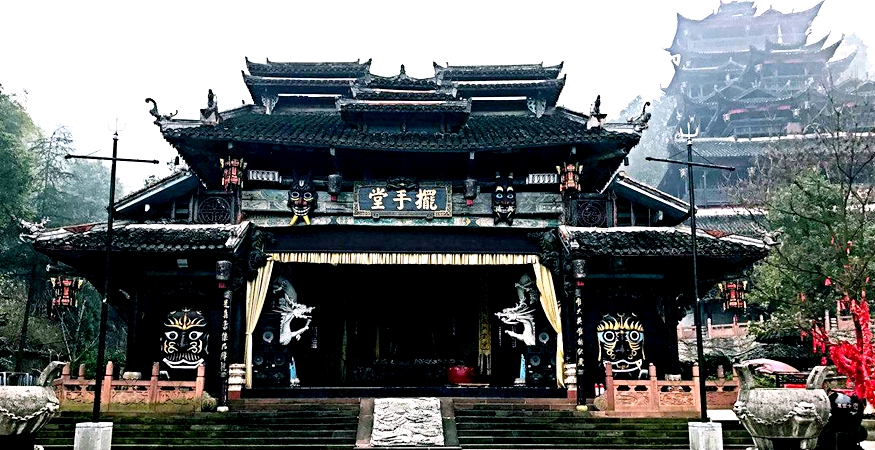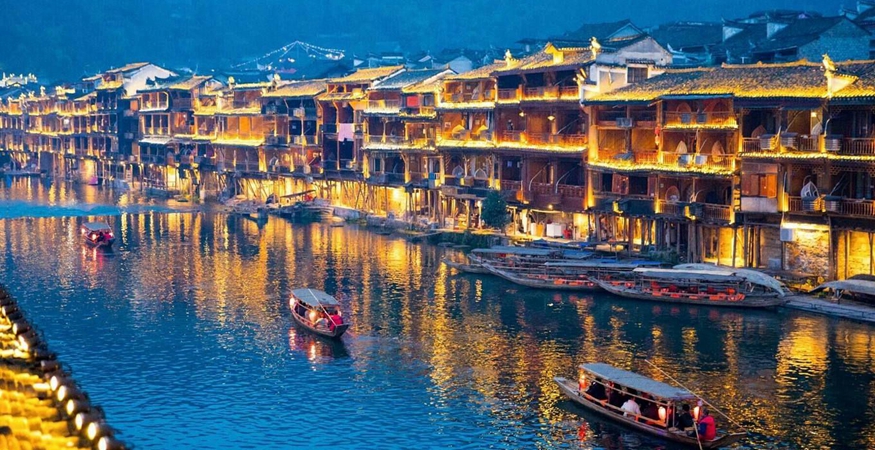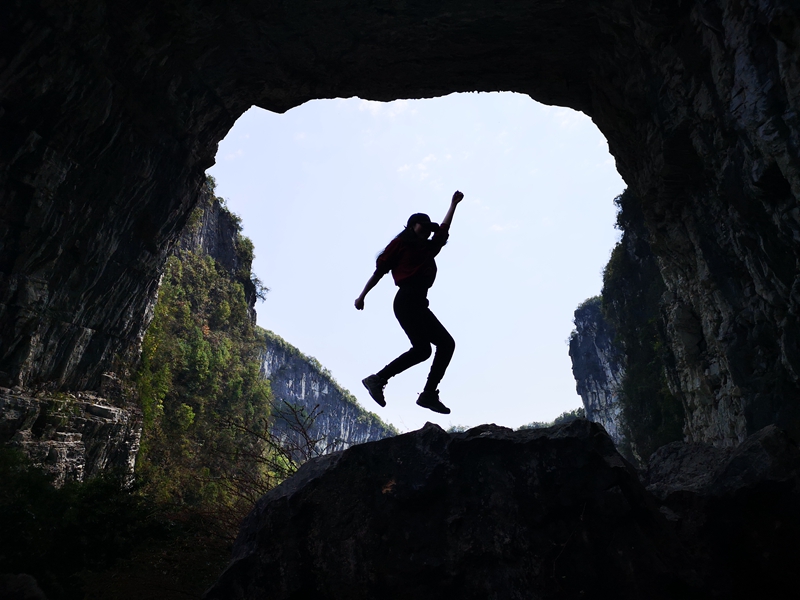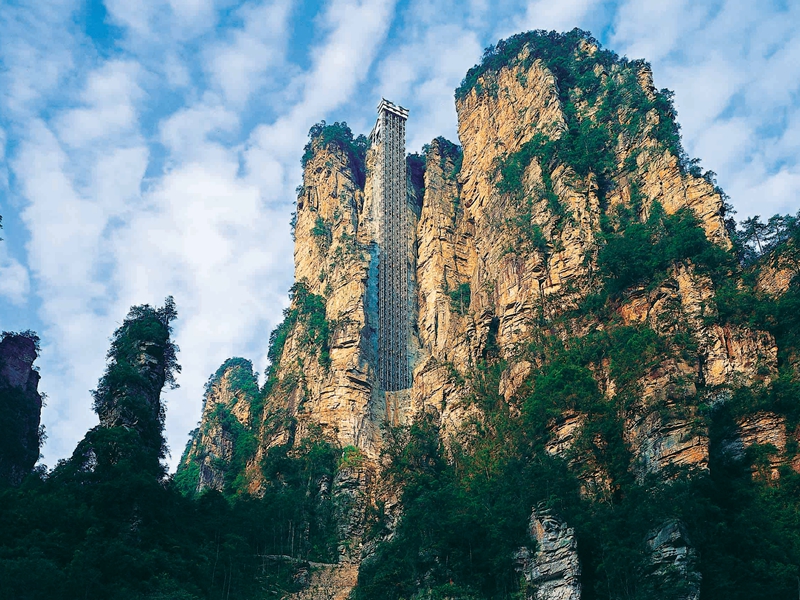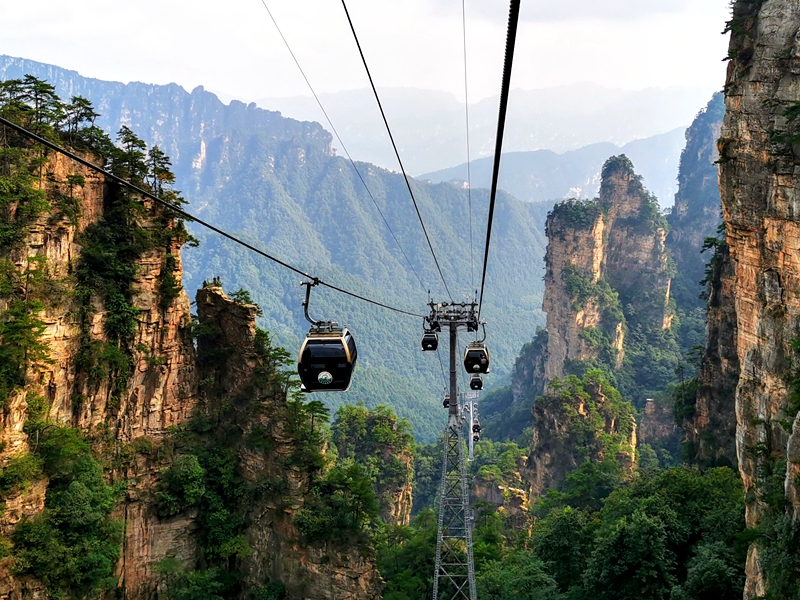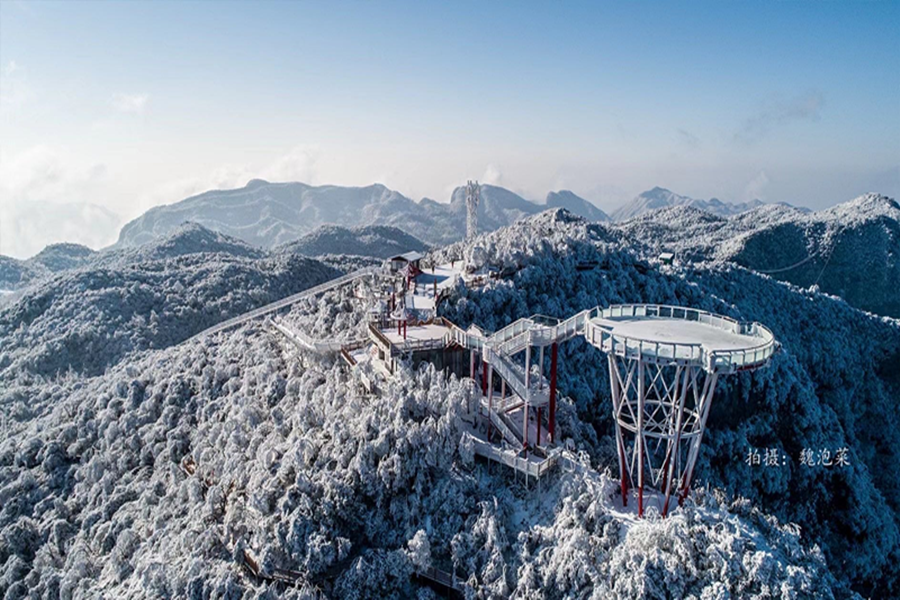
Dripping Water Cave(Dishuidong)
The Dripping water Cave is the so-called”mystic western cave”, located bout 3. 5 km west of the Maozedong Statue Square, It is actually a long cavernous valley sharply narrowed by green hills and leisurely drained by a babbling stream. It lies in seclusion, with the Dragon Head Hill in the south. the ox-like Hill in the west and the Tiger- Resting Ground in the north. It is a tranquil summer resort. The road winds onthe right between the long reservoir and the southern slope of the tiger-resting Ground and finallleads to the common-looking office buildings at the end of the valley Mao returned home for the last time on June 18, 1966 and stayed in Building No. 1 for 10 days. Here everything is kept as they were. Its annexes serve as shops selling souvenirs or exhibition rooms of all kinds of mao’s images. Behind this building is an air-raid cave, which is well guarded by 4 gates. In its neighborhood are such scenic spots as the Eight Scenes Pavilion, the Eight Scenes Steles and the monkey’s Pavilion. A 20-minute climb to the top of the tiger-resting Ground is rewarded by a view of the tomb of mao’s grandpa, the Eight Immortals Playing Vertical Flutes, Goddess of Mercy Holding a Baby as well as a panorama of the valley and the hills around.The table inscribed with poems.
Another well-known tourist attraction there is the Forest of Stone Tablets, a memorial with Poem Parking halfway up to the summit of the Shao Mountain. Built in the landscape garden style in memory The Tablets of mao’s 100th birthday, it covers an area of 20, 000 m and consists of 4 sections arranged chronologically: the First Civil Revolutionary War,the war of resistance against janpanese invasion, the liberation war and the new era On the tablets of grey marble, white marble and granite are inscribed 50 poems of mao’s, which are in the cursive hand of Mao and 22 in the handwriting of renowned calligraphers. Thes poems truthfully record the emotion and thoughts of Mao as a statesman and poet. For example, the poem”Bidding Farewell, I Wave My Hand To You”(1923)shows mad’s reluctance to depart from his dear wife; while the poem”Changsha”(1923) reads, “I ask, who on so vast a ball, /Is to decide the rise and fall?/..Can you, old boys, recall today/How we struck out midstream with waves/ Staying the boats that sped their way? It reveals mao’s firm determination to struggle in the troubled age for the emancipation of the nation Mao grew up in this mountain village and cherished all his life a deep love for his birth place On June 25, 1959, he came back after an absence of 32 years, and wrote the poem entitled”Mt. Shao Revisited”. which reads, The past as dim as dreams, I curse the fleeting time. thirty-two years ago I left my cradle land The Red Banner aroused the peasants with their spears; The tyrant’s scourge was held high in his bloody hand ,But bitter sacrifice has strengthened bold resolve ,Which dares to make the sun and the moon shine in new skies Rejoiced, I see wave upon wave of rice and beans And heroes homebound at dusk when smoke columns rise With the end of “No. 1 Project”in late 2008, Mao,s birthplace has been a model of the cradles of the Chinese communist revolution.
